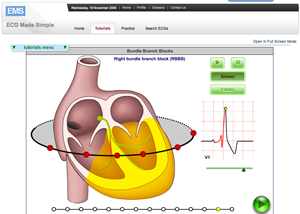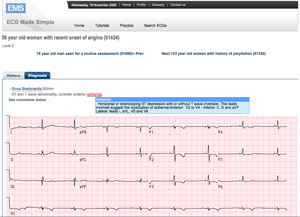Abdominal Striae

Orth, Uptodate 2014, Cushing’s clinical features
Study Smarter

Orth, Uptodate 2014, Cushing’s clinical features
ECG Made Simple (EMS) is a comprehensive web-based ECG learning program that teaches the art and science of electrocardiogram (ECG) interpretation. It addresses the needs of various groups of learners, including medical students, post-graduate medical trainees, and practicing physicians who need a refresher.
The ECG Made Simple tutorials utilize animations extensively to illustrate the often difficult to explain time-based concepts inherent in ECG understanding.
The practice section is populated with ECG tracings of increasing level of difficulty (5 levels). The ECGs could be accessed through the practice lists or by using the “Search Module”, which allows users to search for specific ECGs based on the diagnosis and level of difficulty.
The glossary provides a list of ECG statements with the corresponding diagnostic criteria. These can also be viewed in all ECG cases by pointing the mouse cursor at the active terms


Register now and gain instant access to all tutorials, practice ECGs and other features.
Registration is FREE!
https://torontonotes.ca/wp-content/uploads/2015/11/Emergency_Medicine.pdf
You are seeing Cindy Albrecht, a 19 year old female, for amenorrhea. Please take a focused history for her complaint.
History
You are seeing Stacey Holland, a 23 year old female, for vaginal discharge. Please take a focused history for her complaint.
History
You are seeing Mrs. Thompson, a 56 year old woman, in your outpatient clinic today. She is worried about a left breast mass, and would like your reassurance that it isn’t cancer. Take a focused history of her complaint and perform a focused physical exam.
History
Physical Examination
Inspection
Palpation